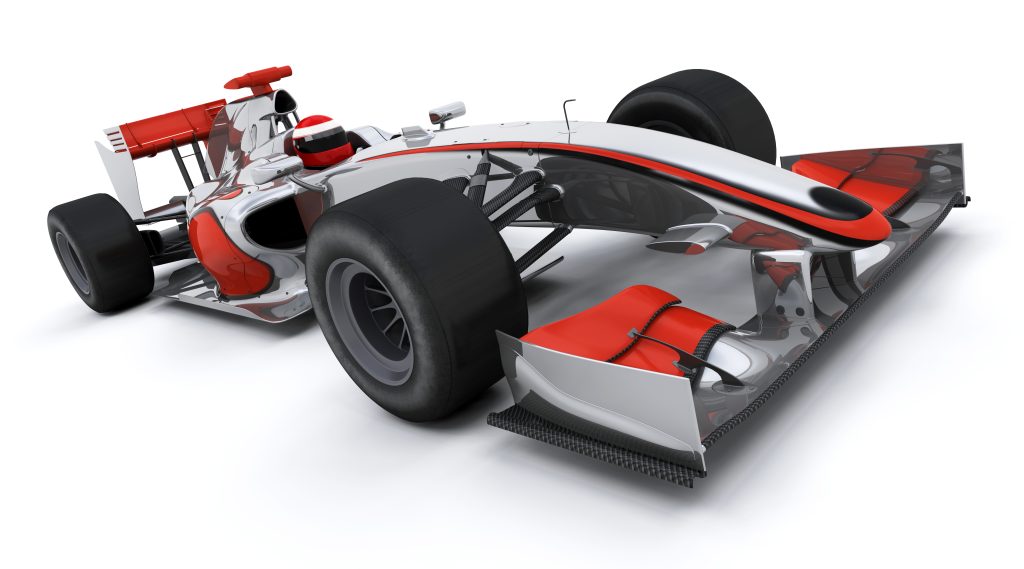You know what they say, “The heart of a Formula 1 car lies in its engine.” So, let’s take a closer look at the powerhouse that propels these incredible machines. From the mind-boggling power output to the cutting-edge technology employed, Formula 1 engines are a true testament to the limits of human ingenuity. But what exactly is the engine that drives these speed demons? Well, hold on tight, because we’re about to embark on a thrilling journey through the world of Formula 1 engines, where innovation and performance collide. Get ready to be amazed by the sheer brilliance behind these extraordinary machines.
F1 Engine Requirements and Power Output
The F1 engine’s requirements and power output are crucial factors in the performance and success of Formula 1 cars. To achieve optimal performance, F1 engines undergo various performance enhancements, emissions reduction measures, and hybrid technology integration. With fuel consumption limitations in place, engineers must carefully optimize power output while ensuring efficiency.
To enhance performance, F1 engines are designed to maximize power output within the constraints of fuel consumption limitations. This requires engineers to employ innovative design techniques and efficient engineering practices. Hybrid technology integration plays a significant role in achieving this balance. F1 engines feature two electric motors, the MGU-K and MGU-H, which contribute to power output and energy recovery during acceleration and braking.
Emissions reduction is a key consideration in F1 engine design. The integration of hybrid technology allows for the recovery of energy that would otherwise be wasted, reducing overall emissions. Additionally, F1 engines undergo rigorous testing and development to meet stringent emission standards.
Fuel consumption limitations pose a challenge for F1 engine designers. With a limited fuel capacity, engineers must optimize the engine’s power output while maximizing fuel efficiency. This is achieved through advanced engineering techniques, such as pre-chamber ignition, which maximizes power output while minimizing fuel consumption.
Fuel Efficiency and Optimization
To achieve maximum performance and efficiency, fuel efficiency and optimization are crucial considerations in the design and development of F1 engines. F1 cars have a limited fuel capacity of 110 kg for the entire race, which necessitates high efficiency. Engineers employ various fuel consumption strategies and engineering techniques to maximize energy extraction from each drop of fuel while balancing power and fuel constraints. Innovations in fuel optimization have allowed F1 engines to achieve impressive levels of efficiency.
| Engineering Techniques for Efficiency | Balancing Power and Fuel Constraints | Innovations in Fuel Optimization |
|---|---|---|
| Highly efficient combustion processes | Precise fuel injection systems | Advanced fuel additives |
| Aerodynamic optimizations | Efficient energy recovery systems | Intelligent fuel management |
| Lightweight materials and components | Optimal gear ratios | Enhanced fuel atomization |
These engineering techniques, along with meticulous aerodynamic optimizations and the use of lightweight materials, contribute to the overall efficiency of F1 engines. By continuously pushing the boundaries of fuel optimization, F1 engine designers strive to extract maximum power while adhering to strict fuel regulations. The constant pursuit of efficiency is what sets F1 engines apart and ensures their remarkable performance on the track.
Complex Engineering and Design
After discussing fuel efficiency and optimization in the design of F1 engines, it is essential to delve into the intricate world of complex engineering and design that enables these engines to achieve remarkable levels of performance. F1 engine designers face numerous engineering constraints and strict regulations, yet they continuously strive to maximize power output while optimizing fuel consumption. To achieve this, they employ innovative design techniques that push the boundaries of engineering.
One of the key challenges is designing an engine that meets the performance requirements within the regulations. F1 engines must adhere to specific size and configuration constraints, such as being 1.6-liter 90-degree V6s with a bore size of 80mm and stroke of 53mm. Despite these limitations, F1 engines produce around 1,000 horsepower and rev up to 15,000 rpm.
To achieve such impressive performance, F1 engine designers use advanced engineering techniques. They employ pre-chamber ignition, where each cylinder has a smaller secondary chamber that ignites first, maximizing power output. Additionally, they optimize the engine’s fuel efficiency by squeezing every last bit of energy from each drop of fuel.
Challenges and Achievements
Faced with numerous engineering constraints and strict regulations, F1 engine designers have achieved remarkable levels of performance through innovative design techniques and a relentless pursuit of maximizing power output while optimizing fuel consumption. The challenges they face include performance limitations imposed by the rulebook, which requires engines to be 1.6-liter V6s with specific bore and stroke sizes. Despite these constraints, F1 engine designers have made significant design breakthroughs to optimize power and efficiency.
One of the key innovations in F1 engines is the use of pre-chamber ignition. Each cylinder has a smaller secondary chamber that ignites first, allowing for a more efficient and powerful combustion process. This, combined with the turbocharger and the Energy Recovery System (ERS), enables F1 engines to extract maximum power from each drop of fuel.
Designers also work within the limitations of limited fuel capacity, with F1 cars only able to carry 110 kg of fuel for the entire race. This necessitates the optimization of fuel efficiency, with engineers employing various techniques to extract as much power as possible from each drop of fuel.
General Information
F1 engines, known for their impressive power and efficiency, are 1.6-liter 90 degree V6s equipped with specific bore and stroke sizes. These engines incorporate advanced F1 engine technology and hybrid power systems to optimize performance and fuel consumption strategies. Here are three key aspects of F1 engine design and functionality:
- Hybrid Power Systems: F1 engines are mild hybrids, featuring two electric motors: the MGU-K and MGU-H. The MGU-K adds around 160 horsepower to the engine, providing an additional power boost during acceleration and braking. The MGU-H, on the other hand, uses energy from exhaust gases to generate electricity, which is stored in the car’s batteries. This hybrid system ensures less energy is lost in exhaust gases and converts it into extra power.
- Fuel Consumption Strategies: F1 engines need to be highly efficient due to limited fuel capacity. With only 110 kg of fuel allowed for the entire race, engineers strive to extract as much power as possible from each drop of fuel. They achieve this through various engineering techniques, optimizing performance within strict fuel constraints.
- Cooling System Design: To prevent overheating and engine failure, F1 engines require efficient cooling systems. Air cooling is utilized for the turbocharger and exhaust system, while liquid cooling is used for the engine block and other components. Coolant circulates through the engine and is passed through a radiator to dissipate heat, maintaining a safe operating temperature for the engine.
F1 engine technology continuously evolves, driven by the pursuit of efficiency, performance, and reducing emissions. The combination of advanced hybrid systems, fuel consumption strategies, and precise cooling system design contributes to the impressive power and performance of F1 engines.
Engine Specifications
The engine specifications of F1 engines are crucial to their performance, and they are characterized by their 1.6-liter 90 degree V6 configuration, turbocharged design, and hybrid technology. These engines produce approximately 1,000 horsepower and can run at a high speed of up to 15,000 rpm. The turbocharger plays a significant role in enhancing engine performance by allowing more air into the engine, resulting in better combustion and increased power output. The turbocharger uses exhaust gases to drive a compressor, which compresses air and delivers it to the engine. The turbocharger can reach speeds of up to 125,000 rpm. The hybrid technology in F1 engines includes two electric motors: the MGU-H (Motor Generator Unit – Heat) and the MGU-K (Motor Generator Unit – Kinetic). The MGU-H utilizes energy from exhaust gases to generate electricity, which is stored in the car’s batteries and can be converted into extra power. The MGU-K, on the other hand, converts kinetic energy into electricity and is used to increase power output during acceleration and braking. These engine specifications, along with turbocharging techniques and hybrid technology, contribute to the impressive engine performance, efficient fuel consumption, and overall power output of F1 engines.
Turbocharger
With the goal of enhancing engine performance, the turbocharger is a crucial component in Formula 1 engines, allowing for increased air intake and improved combustion. The turbocharger provides several advantages that significantly impact the overall efficiency and performance of the engine.
- Increased Air Intake: The turbocharger uses exhaust gases to drive a compressor, which compresses the air before it enters the engine. This compressed air allows a higher volume of air to be forced into the cylinders, resulting in improved combustion and increased power output.
- Enhanced Combustion: By supplying a greater amount of compressed air to the engine, the turbocharger enables a more efficient combustion process. This leads to better fuel utilization and improved overall engine efficiency.
- Technology and Performance: The turbocharger technology used in Formula 1 engines is highly advanced and optimized for maximum performance. It can reach speeds of up to 125,000 rpm, allowing for rapid air compression and increased power generation.
The turbocharger’s impact on Formula 1 engines cannot be overstated. Its ability to increase air intake and improve combustion has revolutionized engine performance, allowing for higher power outputs and more efficient fuel utilization. The integration of turbocharger technology in Formula 1 engines showcases the constant pursuit of advancements in engineering and the relentless drive for peak performance.
MGU-H and MGU-K
After understanding the impact of the turbocharger on Formula 1 engines, it is essential to delve into the role of the MGU-H and MGU-K in maximizing power output and efficiency. The MGU-H, or Motor Generator Unit – Heat, is a crucial component of hybrid technology in F1 engines. It utilizes the energy from the exhaust gases to generate electricity, which is then stored in the car’s batteries. By doing so, the MGU-H ensures that less energy is lost in the exhaust gases, effectively converting it into extra power for the engine. This system greatly enhances the overall efficiency of the engine.
On the other hand, the MGU-K, or Motor Generator Unit – Kinetic, plays a vital role in increasing power output during acceleration and braking. It converts kinetic energy into electricity, which is either fed directly to the electric motors or stored in a battery. With a maximum power of 120 kW (160 hp) and weighing no more than 7 kilograms, the MGU-K provides an additional boost to the engine’s performance.
The combination of these two units, along with the overall hybrid technology, offers several advantages in Formula 1. The energy recovery system allows for the capture and conversion of energy that would otherwise be wasted, resulting in improved fuel efficiency. Additionally, the MGU-K’s functionality during acceleration and braking enhances the engine’s overall performance, providing a significant boost in power output.


